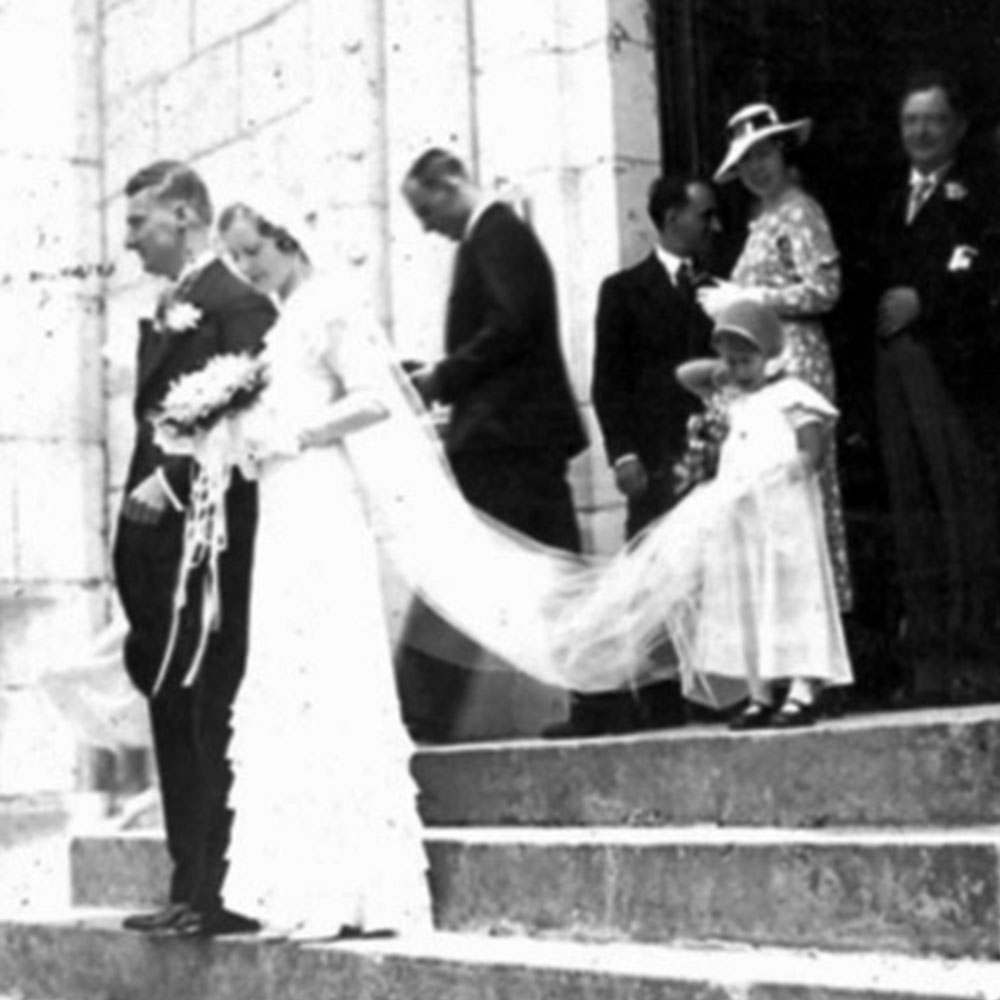Olivia Riboud Recalls Her Parents and Grandparents
Editor’s Note: In the spring of 2023, I had this conversation with my first cousin, Olivia Cosgrave Riboud, always known to me as Livie. Livie is the daughter of my mother’s sister, Nancy Gwinn Riboud, and the closest to me in age of my French cousins. Both of us have always shared an interest in our family histories, so it was fun for us to have a chance to chat together as usual about the Gwinn Family and Riboud Family.
Our conversation began with a brief exchange on the importance our parents’ generation attached to family bonds. The relationships between the Bowe Families and the Riboud families would never have survived separation by the Atlantic Ocean over four generations without these values being deeply embedded in Livie and me as we grew up. As a first observation, Livie notes that her father, Jacques Riboud, was more voluble in talking about family history than her mother. She notes with regret that some of the family information from her mother she carefully wrote down was lost when she later lost track of her notepad. Next, Livie briefly went on to review her siblings, Chesley, Betsy, Jean Jacques, and Jean Gwinn Riboud and their de la Chapelle, Lacombe, Kuhn, and Corderoc’h offspring.
Livie’s mother, “Nancy” Anne Chesley Gwinn, was born in Baltimore, Maryland in 1911 to her parents, Richard Gwinn, Jr., my maternal grandfather, and his second wife, Elizabeth Tack Gwinn. Livie talks about her mother Nancy Gwinn’s sisters, Elizabeth Gwinn, known as Betty, and Martha Gwinn, who later married John Casey. Nancy, Martha and Betty’s oldest sister was Mary Gwinn Bowe, my mother. My mother’s mother was Richard Gwinn’s first wife, Mary Roche Gwinn. She had died in 1901 giving birth to my mother. Livie says her mother Nancy said, speaking of the way she and her sisters thought of their father, Richard Gwinn, “We were all crazy about him.” Livie remembers my mother, her Aunt Mary Gwinn Bowe, as a “grand lady,” and my father William Bowe, Sr. as “extremely charming,” but probably a “difficult” father. Pictures of Jacques Riboud when he married Nancy Gwinn in 1933 confirm Livie statement that her mother married a “sexy Frenchman.”
Livie says Jacques’ father, Paul Riboud (“Bon Papa”), was “brilliant.” She reviews how he entered the great French engineering school Ecole Polytechnique as the last in his class, but finished first. Coming from a modest family in the Lyon area, she reports that Bon Papa was the son of a railroad man, but Bon Papa’s railroad career was different in that he was wildly successful as he went on to become director of the entire Eastern Division of the French railway system. Along the way, Bon Papa had suffered a devastating loss when his first wife died in childbirth. Livie says he had another terrible event in his life when a train accident in Lagne, France killing many passengers happened on his watch. Livie says that Bon Papa’s second wife, Livie’s French grandmother, Louise Paris Riboud, was an artistic woman who was born in the Auvergne region of France. Livie says was a good painter, and she tells the family story of pinch-penny Bon Papa reluctantly paying a 1,000 francs for a watercolor painting Louise fancied.
Livie goes on to talk about the tragic, not so accidental, death of Bon Papa and Louise’s daughter Nicole Riboud in Chindrieux, France in 1942, the year I was born. Livie explains the painful way Bon Papa dealt with the event’s aftermath in the small village during the pressures of World War II. Before the War, Nicole, who spoke English, had visited the Bowe family in Chicago and I have a picture of her by Lake Michigan near our apartment. Both Livie and I went on to recall the image of Bon Papa driving his small, almost antique Citroen car as he approached 100 years of age. Livie says that Bon Papa had a more intimate relationship with his daughter Yvonne Riboud Latour than he had with his son Jacques. She reports the latter relationship focused more on business and politics than family matters. Speaking again of her father Jacques, Livie says that he had a wonderful relationship with his sister Yvonne and that at the dinner table, they could be the “funniest couple in the world.”
Livie explains how the French Riboud family became intertwined with the American Gwinn family when Jacques and Nancy met each other in 1932 while both were crossing the Atlantic on the ocean liner Lafayette, the largest ship of the French Line service. She says that members of the Gwinn family had become intimately familiar with Europe earlier. Betty had studied voice in Germany in the 1920s with pianist Artur Schnabel’s wife, contralto and Lieder singer Therese Behr Schnabel and Martha had separately pursued classical music training there with her piano studies. Both Livie and I struggled to remember exactly how Martha and concert pianist Rudolf Serkin came to be good friends in this period. I recall as a boy in the 1950s when Martha and her husband John Casey and Serkin visited our Elm Street apartment once when Serkin visited Chicago to give a concert at Ravinia. Livie says that her mother Nancy had shown some artistic talent as a young dancer, but shortly found pursuing this art form was was deemed unbecoming because, “young girls don’t show their legs.” While not pursuing her dance bent further, Livie reports her mother had other artistic interests and had come to know opera singer Jessye Norman through Agatha Moll, a

Livie Riboud & Mary Frates with Cole Frates & Famke Janssen
friend of her sister Martha. If the Gwinn family had become Europeanized, Jacques Riboud had become somewhat Americanized through an exceptional visit to the United States.
This was in the period immediately preceding his return to France on the Lafayette. As a young Frenchman interested in learning about the oil business, he had come to the States on a Grand Tour to visit the main outposts of its booming oil sector. On his trip to understand this newly developing industry, Jacques had made a stop in the boomtown of Punca City, Oklahoma, where he visited the home of oil tycoon E.W. Marland. Livie reports how Marland hosted the young man in now famous Marland Mansion there. Livie also notes the amazing coincidence that at one grand party in Oklahoma attended by her father, he had danced with mother of one of Livie’s lifelong friends, Mary Frates. With this successful fact finding mission behind Jacques, Livie describes how the shipboard romance unfolded as the Gwinn sisters and their mother, together with my parents, turned out to also be sailing to France on the Lafayette. The goal of the trip for the Gwinn family was try to put the recent death of Richard Gwinn behind.









